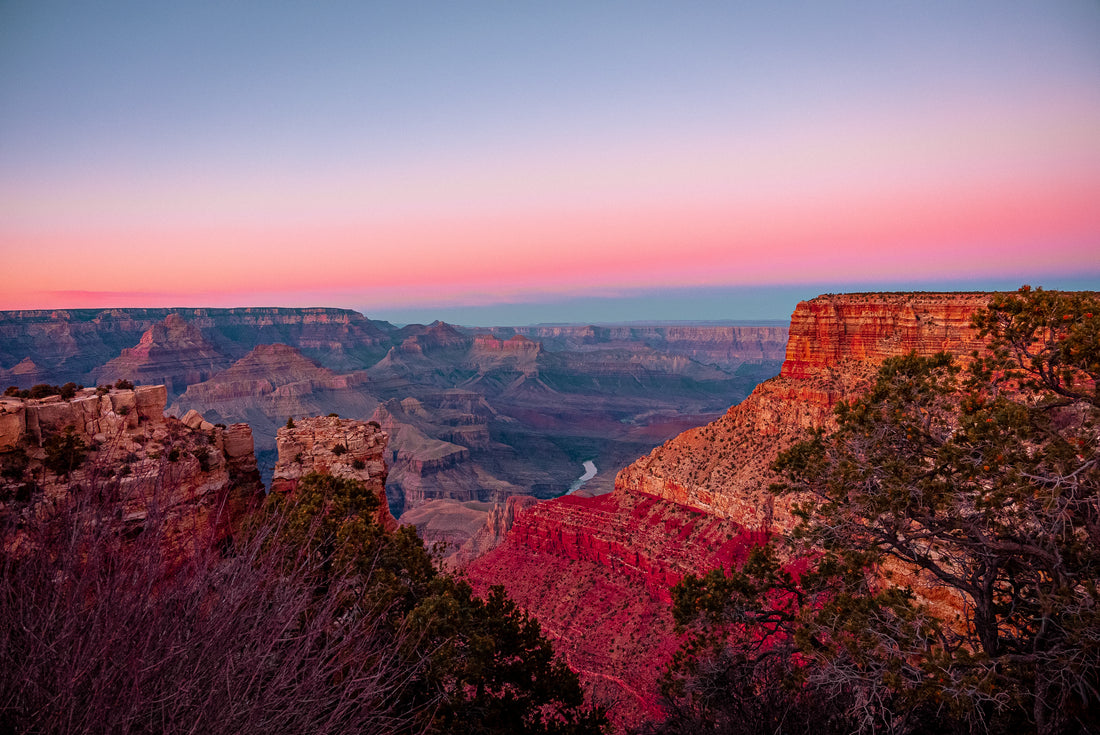The Grand Canyon is a result of billions of years of geologic history, with the foundational rock being around 2 billion years old. North America had not yet been built up when the continent collided with volcanic islands in the ocean to form an enormous mountain range, which was uplifted 1.7 to 1.8 billion years ago. The pressure of the collision event metamorphosed underlying layers of rock into things like schist. At the same time, magma from beneath the crust of the Earth was boiling up and intruding into cracks, crevices, and folds in the schist, creating massive slabs of granite. Over millions of years, the mountains eroded away from the top down, leaving behind the roots of schist and granite rock. The Colorado River then carved into the Colorado Plateau over the past 5.5 million years, reaching the foundational layer of the Grand Canyon. The basement complex is the foundational rock that the continental plate is built on, and it is the first bottom layer of the Grand Canyon. Visitors can see the dark black Gorge, which is all the metamorphic shifts from the roots of those mountains, and the lighter pinkish streaks, which are all the igneous granite that intruded into those folds and cracks. The park service has used the native stone of the Grand Canyon to build some of their infrastructure, providing visitors with the opportunity to see the 1.7 to 1.8 billion-year-old rock up close.

